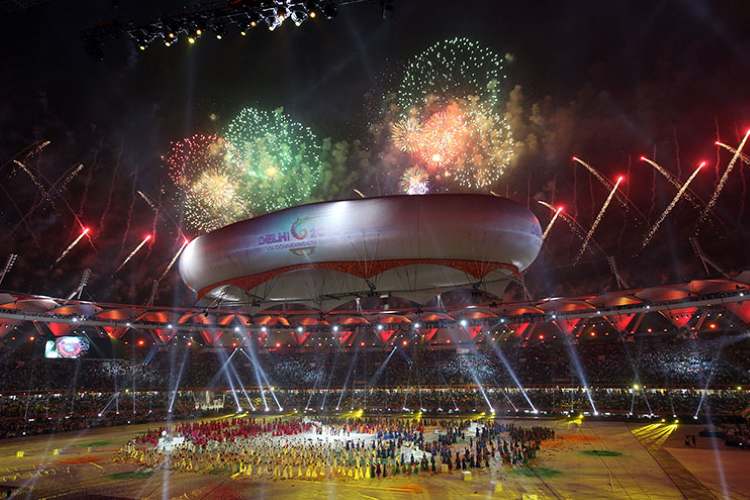
India’s plan to host the 2030 Commonwealth Games in Ahmedabad is more than a sporting proposal—it is a statement of intent. It signals the country’s readiness to assume global sporting responsibilities and to showcase its growing capacity for large-scale event management, with an eye on the 2036 Olympic bid. The announcement rekindles memories of Delhi 2010, a moment of both triumph and turmoil. India’s athletes delivered a record 101 medals, yet the Games became synonymous with cost overruns, corruption, and displacement.
Ahmedabad 2030 must show that the country has moved beyond those missteps. The city’s modern infrastructure, strong civic institutions, and lessons learned from past failures offer a chance to present a different narrative—one where ambition is matched by discipline, and pride is grounded in accountability.
READ I EV subsidies rekindle India-China trade tensions
Centennial games, modern India
The 2030 Commonwealth Games will mark the centenary of the Games, offering India a rare chance to present itself as a confident, modern, and inclusive nation. Ahmedabad stands well prepared. The city’s infrastructure — anchored by the Narendra Modi Stadium, the world’s largest cricket arena — is complemented by Smart City projects, GIFT City, and improved transport connectivity.

Economic projections suggest that hosting mega-events can boost a city’s GDP by 0.3–0.5% annually. For a $4 trillion economy, that could translate into billions in fresh activity and job creation across construction, tourism, logistics, and services. Beyond national prestige, the Games could touch ordinary lives, creating opportunities to earn, learn, and take part in a global event watched by millions.
Why Ahmedabad 2030 could succeed
The 2010 Delhi Commonwealth Games showcased India’s growing ambition. The medal tally was a record high, and the city gained lasting assets — the expanded Metro, new flyovers, and upgraded sports facilities. Yet, mismanagement eroded the gains. Costs soared from an estimated ₹1,200 crore to nearly ₹18,000 crore. Corruption scandals dominated global headlines, while citizens faced displacement and disruption. Images of collapsing footbridges and substandard athlete housing became global symbols of administrative failure. The episode remains a cautionary tale of ambition untempered by accountability.
Fifteen years later, India’s governance and financial systems are more robust. Much of the necessary infrastructure already exists, reducing the scope for last-minute waste. Stronger audit mechanisms, transparency mandates, and real-time public finance monitoring through the PFMS (Public Financial Management System) can help track spending and prevent leakages.
The sporting ecosystem, too, is stronger. Programmes like Khelo India and the Target Olympic Podium Scheme have improved athlete development and infrastructure. India’s proposal also reflects a cultural inclusiveness—featuring women’s cricket, kabaddi, kho-kho, and yoga, alongside reinstated shooting and wrestling. This blend of modern and indigenous sports can strengthen competitiveness while connecting with India’s social fabric.
Hosting a mega-event demands more than infrastructure; it requires financial discipline and institutional clarity. The government must spell out a transparent Centre–State–City cost-sharing formula and establish a special purpose vehicle (SPV) to execute projects, manage procurement, and monitor delivery. Clear accountability lines are essential—without them, cost overruns and delays can multiply, as seen in Delhi 2010.
A time-bound audit and grievance mechanism, coupled with public dashboards on expenditure, can reassure taxpayers that funds are being used efficiently. Involving private partners through public-private partnerships (PPP) for venue construction, hospitality, and transport services could also distribute risk and enhance operational efficiency, provided robust contracts and performance guarantees are in place.
Managing costs and social impact
Even with these advantages, the risks remain real. Experiences from Rio 2016 and Tokyo 2020 show that mega-event costs can spiral, straining public finances. Equally pressing are the social and environmental risks—forced relocations, poor labour standards, and ecological damage. Ahmedabad’s preparations must safeguard informal workers, ensure fair wages, and prevent unsafe conditions. The city’s Smart City plan will need strict pollution controls, waste management, and emission targets to prevent an environmental setback.
No 21st-century Games can afford to ignore climate imperatives. Ahmedabad’s extreme heat and pollution levels make environmental safeguards central to the project’s credibility. Every stage—from design to delivery—must adopt low-emission construction, renewable power, and efficient waste management. The city’s Heat Action Plan, already regarded as a national model, should be integrated into venue scheduling and workforce protection measures.
Certifying venues under ISO 20121 for sustainable event management, enforcing water recycling, and limiting single-use plastics can ensure that the Games align with India’s net-zero ambitions. Publicly reported carbon budgets and progress indicators would help transform Ahmedabad Commonwealth Games 2030 into a global showcase of sustainable urban planning rather than another environmental burden.
Building a sustainable legacy
For Ahmedabad bid for Commonwealth Games 2030 to succeed beyond the fortnight of competition, legacy planning must start now. The Athletes’ Village and supporting facilities should be designed for post-Games conversion into affordable housing, student hostels, or sports academies, ensuring permanent social value. Modular venues that can be downsized or repurposed will prevent the “white elephant” problem that plagues many host cities.
Equally, the planning process for the Commonwealth Games must engage local communities early—especially those near construction sites—to avoid forced relocations and ensure access to new amenities. By embedding inclusivity and long-term usability into the city’s master plan, Ahmedabad can ensure that its Commonwealth legacy serves citizens as much as it serves sport.
The Commonwealth Games’ true success will depend on how inclusively and transparently they are managed. Public dashboards showing fund flows, independent audit oversight, and local participation in planning can ensure credibility. Venues powered by renewable energy, low-emission transport systems, and water-recycling facilities can make Ahmedabad a model for green urban planning.
Post-Games legacy planning will be critical—ensuring that stadiums, training centres, and athlete villages are repurposed for community sports, education, and tourism rather than left to decay. The 1992 Barcelona Olympics remain a benchmark for how cities can use mega-events for urban renewal, while Athens 2004 and Rio 2016 illustrate how poor planning can leave behind debt and derelict infrastructure. Ahmedabad must aim for the former.
Hosting the centennial Commonwealth Games gives India a stage to showcase its athletes, project soft power, and reaffirm its reform credentials. The challenge will be to balance ambition with prudence—to deliver Games that are efficient, transparent, and sustainable. If Ahmedabad succeeds, it will not merely host a sporting event but script a turning point—where national pride met institutional maturity, and ambition aligned with accountability.
If done wisely, Ahmedabad Commonwealth Games will be remembered not just for medals and ceremonies but as a moment when India demonstrated how large-scale ambition can coexist with fiscal discipline, social inclusion, and environmental responsibility.
The writer is Assistant Professor (Economics), Assistant Dean (UG Council), and Director, Center for Economics, Law and Public Policy, National Law University, Jodhpur.
